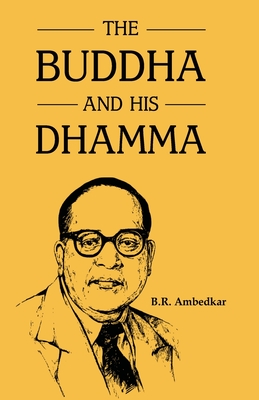The Buddha and His Dhamma

The Buddha and His Dhamma
Indications of a growth in the volume of interest in Buddhism are noticeable in some sections of the Indian people. Along with it there is naturally a growing demand for a clear and consistent statement of the life and teachings of the Buddha. Anyone who is not a Buddhist finds it extremely difficult to present the life and teachings of the Buddha in a manner which would make it a consistent whole. Depending on the Nikayas, not only the presentation of a consistent story of the life of the Buddha becomes a difficult thing and the presentation of some parts of his teachings becomes much more so. Indeed it would not be an exaggeration to say that of all the founders of religions in the world the presentation of the life and teachings of the founder of Buddhism presents a problem which is quite puzzling if not baffling. Is it not necessary that these problems should be solved and the path for the understanding of Buddhism be made clear? Is it not time that those who are Buddhists should take up these problems at least for general discussion and throw what light they can on these problems ? With a view to raise a discussion on these problems I propose to set them out here. The first problem relates to the main event in the life of the Buddha, namely, Parivraja. Why did the Buddha take Parivraja? The traditional answer is that he took Parivraja because he saw a dead person, a sick person and an old person. This answer is absurd on the face of it. The Buddha took Parivraja at the age of 29. If he took Parivraja as a result of these three sights, how is it he did not see these three sights earlier? These are common events occurring by hundreds and the Buddha could not have failed to come across them earlier. It is impossible to accept the traditional explanation that this was the first time he saw them. The explanation is not plausible and does not appeal to reason. But if this is not the answer to the question, what is the real answer? 1. Siddharth Gautama - How a Bodhisatta became the Buddha, 2. Compaign of Conversion, 3. What the Buddha Taught, 4. Religion and Dhamma, 5. The Sangh, 6. He and His Contemporaries, 7. The Wanderer's Last Journey, 8. The Man who was Siddharatha Gautama, 9. Epilogue.
PRP: 206.58 Lei
Acesta este Prețul Recomandat de Producător. Prețul de vânzare al produsului este afișat mai jos.
165.26Lei
165.26Lei
206.58 LeiIndisponibil
Descrierea produsului
Indications of a growth in the volume of interest in Buddhism are noticeable in some sections of the Indian people. Along with it there is naturally a growing demand for a clear and consistent statement of the life and teachings of the Buddha. Anyone who is not a Buddhist finds it extremely difficult to present the life and teachings of the Buddha in a manner which would make it a consistent whole. Depending on the Nikayas, not only the presentation of a consistent story of the life of the Buddha becomes a difficult thing and the presentation of some parts of his teachings becomes much more so. Indeed it would not be an exaggeration to say that of all the founders of religions in the world the presentation of the life and teachings of the founder of Buddhism presents a problem which is quite puzzling if not baffling. Is it not necessary that these problems should be solved and the path for the understanding of Buddhism be made clear? Is it not time that those who are Buddhists should take up these problems at least for general discussion and throw what light they can on these problems ? With a view to raise a discussion on these problems I propose to set them out here. The first problem relates to the main event in the life of the Buddha, namely, Parivraja. Why did the Buddha take Parivraja? The traditional answer is that he took Parivraja because he saw a dead person, a sick person and an old person. This answer is absurd on the face of it. The Buddha took Parivraja at the age of 29. If he took Parivraja as a result of these three sights, how is it he did not see these three sights earlier? These are common events occurring by hundreds and the Buddha could not have failed to come across them earlier. It is impossible to accept the traditional explanation that this was the first time he saw them. The explanation is not plausible and does not appeal to reason. But if this is not the answer to the question, what is the real answer? 1. Siddharth Gautama - How a Bodhisatta became the Buddha, 2. Compaign of Conversion, 3. What the Buddha Taught, 4. Religion and Dhamma, 5. The Sangh, 6. He and His Contemporaries, 7. The Wanderer's Last Journey, 8. The Man who was Siddharatha Gautama, 9. Epilogue.
Detaliile produsului









